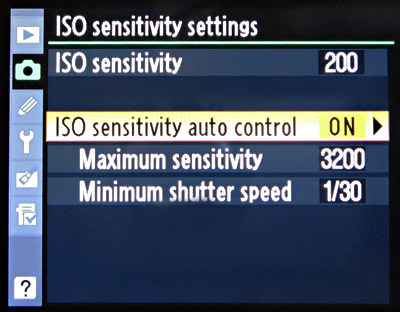Correct exposure is like filling a glass with water from a tap, exactly to the line - not too much, not too little.
The lens aperture is how hard you turn on the tap. The shutter speed is how long you turn it on for. And ISO is the size of the glass. Raising ISO is like filling a smaller glass so you don't need as much water and with digital you can change it at will. This is a major advantage, unlike film where ISO is fixed according to the film type.
ISO is basically amplification, like a volume control, that boosts the signal generated by the light falling on the sensor, effectively making the image brighter. So you can shoot in lower light* or compensate for the reduced light you get by using a fast shutter speed or a small lens aperture (high f/number).
The three key exposure controls of lens aperture, shutter speed and ISO are commonly known as the Exposure Triangle and are all inextricably linked - any change to one affects the overall exposure and has to be compensated by the others. As well as adjusting exposure, the three key controls are central to creative control, particularly depth-of-field (aperture - how much of the subject appears sharp from near to far) and movement blur (shutter speed). The downside to ISO is if you push it too high, image quality can degrade. Good ISO performance is one of the main benefits of high-end cameras with larger, modern sensors.
*In this water/glass analogy, the amount of ambient light falling on the subject equates to the water pressure coming from the mains supply feeding the tap, ie high water pressure equals bright light and vice versa.
Edit: Exposure is adjusted in 'stops' or fractions of a stop. The term 'stop' is a bit of jargon really with a loose historical connection, but it is very widely used and one stop refers to any halving or doubling of exposure. With shutter speeds, the logic is easy to follow with 1/125sec being twice as long as 1/250sec (one stop difference) which is double 1/500sec (one more stop) and so on. ISO is pretty logical too, with ISO100 needing twice as much light as ISO200, which is twice ISO400 etc. Lens apertures are less easy to grasp so you just have to learn that, for example, f/4 allows twice as much light to pass as f/5.6, which is twice f/8 etc etc. The link is actually the square root of two, ie 1.4x with some roundings going on. The full range of f/numbers commonly found on lenses is f/1.4, 2, 2.8, 4, 5.6, 8, 11, 16, 22. Also note that the lower f/numbers, from say f/1.4 to f/4-ish, are usually the preserve of prime lenses (fixed focal length). There are a few zooms (variable focal length) that dip down into that range but they tend to be very big, heavy, and expensive.


